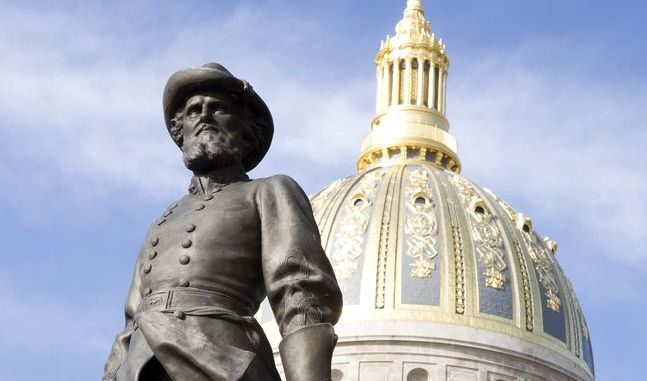MORGANTOWN, W.Va. — Raw nerves are robbing the nation of a clear debate over what the next step should be for Confederate monuments and other controversial memorials across the nation. The flashpoint of violence in Charlottesville, Virginia over a statue of Robert E. Lee has led to national decisions and in some cases removal of some Confederate symbols with no public debate.
“The problem is when these protests get ugly, and get big and get violent” said Dr. Jason Phillips, Everly Professor of Civil War Studies at West Virginia University. “Then you’re creating a situation in which city councilmen and mayors decide in the middle of the night the safest thing to do for public safety is to make that statue disappear.”
Phillips, speaking on MetroNews Talkline, said he didn’t disagree that some statutes need to be removed as the modern day questions raised about the Civil war have emerged, but lamented the matter has become so polarized true debate isn’t happening.
“I hate to see them disappear overnight and we don’t know what’s going to happen,” he said. “We don’t want to strip our public spaces of beauty, and I do agree many of the public statues need to come down, but at that moment we need to commit to putting up beautiful statues.”
The public tug-of-war in the wake of Charlottesville, which in some ways is happening in West Virginia particularly surrounding the monuments to Stonewall Jackson, are a debate of heritage and history versus hate.
The statues commemorating Civil War figures have largely been put in place during the 20th Century, well after those who fought the Civil War had passed on. There were two key periods the monuments were erected, according to Phillips, in the early 20th century during the Jim Crow era and during the 1950’s and 60’s when the Civil Rights movement was happening.
“Obviously both of those peak periods have something to do with race,” Phillips explained. “There’s a disconnect there between the memory of the war and the war experience itself.”

